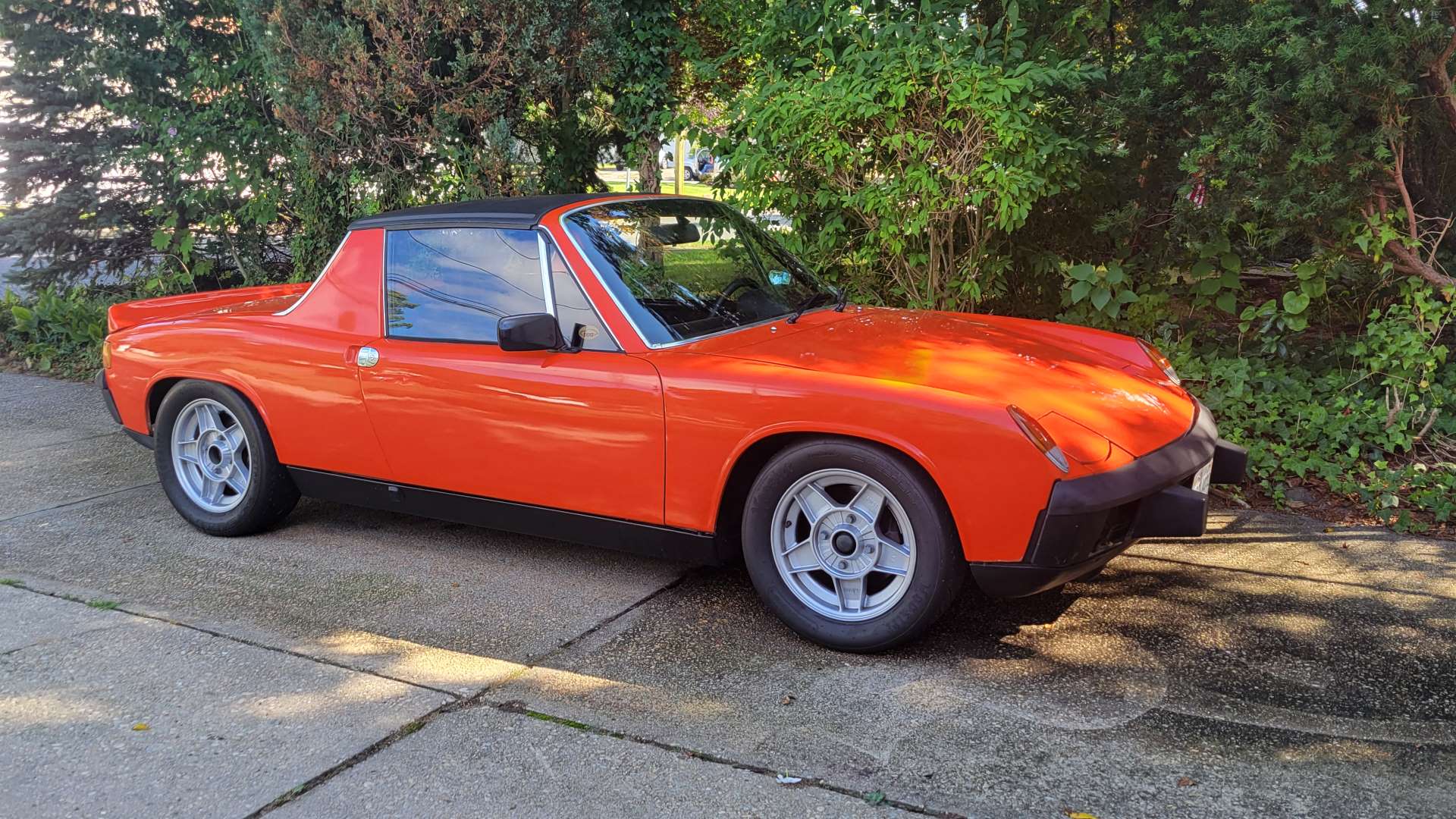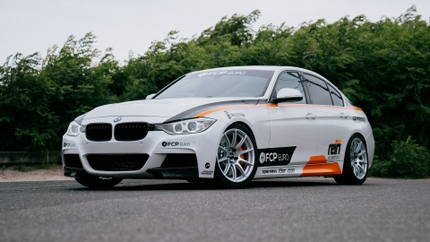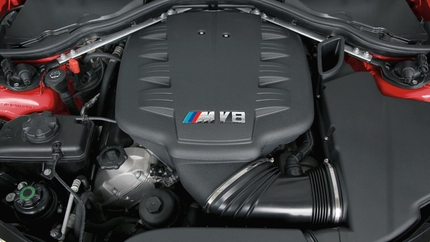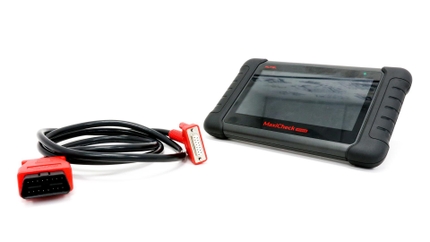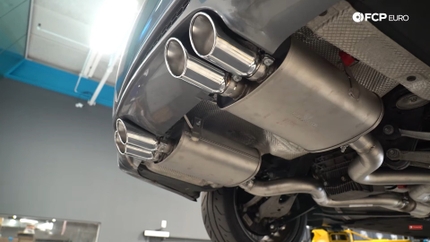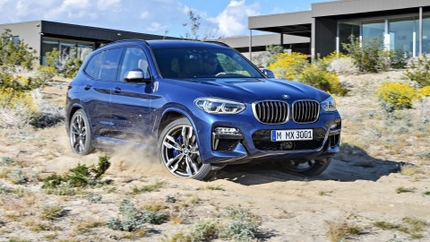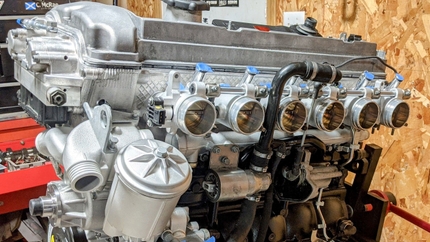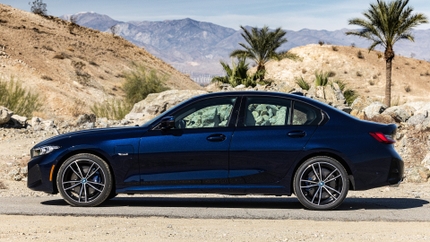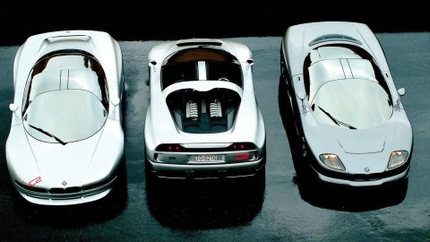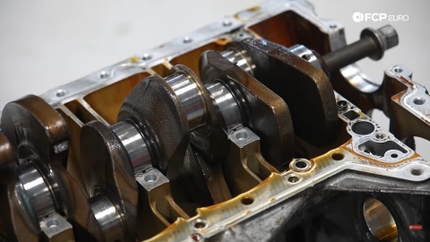- 10/21/2022
- 44 Min Read
- By: Christian Schaefer
The Best E46 M3 Paint Colors Available From The Factory
The BMW E46 M3 is primarily regarded as one of the best all-around M3s in the model’s storied existence. That’s primarily due to the slick six-speed manual and high-revving S54 straight-six engine, though the looks have played a significant role. The swooping, muscular lines of the E46 has enamored BMW enthusiasts since it hit magazine covers in 2001. However, the colors those M3s wore weren’t always the most popular.
BMW color pallet mainstays like Alpine White were still there, but newer colors like Phoenix Yellow served as the polarizing option for the buyers looking to stand out. Over a decade past production, opinions have changed, and a whole world of E46 M3s painted by BMW Individual have found their way into the public eye. Can anyone genuinely determine the best E46 M3 color? I’d doubt it, so instead, we’ll give you a list of the best colors to ever adorn one of BMW’s finest.
Standard Colors
Potential buyers didn’t have to splurge for the custom BMW Individual paint options to apply some fantastic colors to their E46 M3. Instead, they could choose from several good options from the standard paint list. Silver and black made up a significant portion of sales throughout the six-year production run, but BMW offered some of their most beloved colors for this generation. Here are some of the best standard colors offered on the E46 M3.
Oxford Green II Metallic
The F80 and G80 M3s have leaned into green pretty heavily. The current offering of Isle Of Man Green on the G80s is a striking color that transitions from a medium green in low light to a near jade green out in the sun. However, the color’s popularity hasn’t always been this strong. Silver and grey were the big sellers around 2000, and you can see that through the limited availability of Oxford Green E46 M3s on the market today.
Supposedly only 429 examples of the E46 M3 received the metallic green paint, which is a shame, as it looks right at home on the M3’s flared fenders and arches. Oxford Green is a deep color with little metallic to write home about in all light but sunlight. It brightens up in overcast light but only begins to show its actual depth once in direct sunlight. That can make it tough to capture the color in pictures, but I can assure you it’ll have you double-take to get a longer look. The sun’s rays hit the green, and suddenly the almost-muted green becomes a vibrant but still dark, forest-like color. Picture an evergreen tree, a rich green with heavy blue undertones.
With that said, Oxford Green isn’t for everyone. The M3 is a shouty and aggressive car that many believe deserves a paint shade to match. As a counter-argument, Oxford Green serves as a beautiful but understated choice that, in the right light, accentuates the M3’s flowing and aggressive lines as best as any other standard color. Pair it with a Cinnamon interior, and you’ll have one of the best color combinations out there.
Laguna Seca Blue
If there were ever one color to rule them all, it’d probably be Laguna Seca Blue. Not from a production standpoint, silver handily takes the cake there, but LSB has lived on as a popular choice for those looking to add a non-factory color to their European or Japanese tuner car. Unfortunately for many, Laguna Seca Blue hasn’t appeared on any M-car build sheet since then, making it one of the more sought-after colors ever fitted to an M3.
LSB was one of four non-metallic colors offered as standard on the E46, but it still manages to change in tone based on the light at any moment. It appears to be almost a sky-blue color in specific pictures and lights, similar to Porsche’s Arrow Blue. Yet, the BMW color appears far more like a teal in others, carrying far more green undertones than previously realized. It is a very Mediterranean-looking color and would likely blend right into the scenery in Santorini.
Whether BMW didn’t want to produce LSB M3s out of fear they wouldn’t sell, or buyers didn’t spec the color, the availability of those examples doesn’t equal the love the community has for them. Great news for some as the paint will command a higher price than a similarly optioned Silver Grey or Titanium Silver M3, although there are still deals out there. You might want to avoid LSB if you’re interested in the wildest color combinations, as the vast majority had either Grey or Black Nappa leather upholstery. However, a lucky few out there have their Laguna Seca Blue paint paired with the Laguna Seca Blue Nappa leather. A wild combo for sure, but one the E46 M3 can undoubtedly pull off.
Interlagos Blue Metallic
While everyone thinks of Laguna Seca Blue for the E46 M3, Interlagos Blue is arguably the much better color. The stunning blue was introduced as part of the ZCP Competition Package post-2004 and was available strictly on ZCP-equipped models. That kept Interlagos to a small production window and a smaller quantity of examples as a result, which is a shame for most, but makes seeing one in person all the more special.
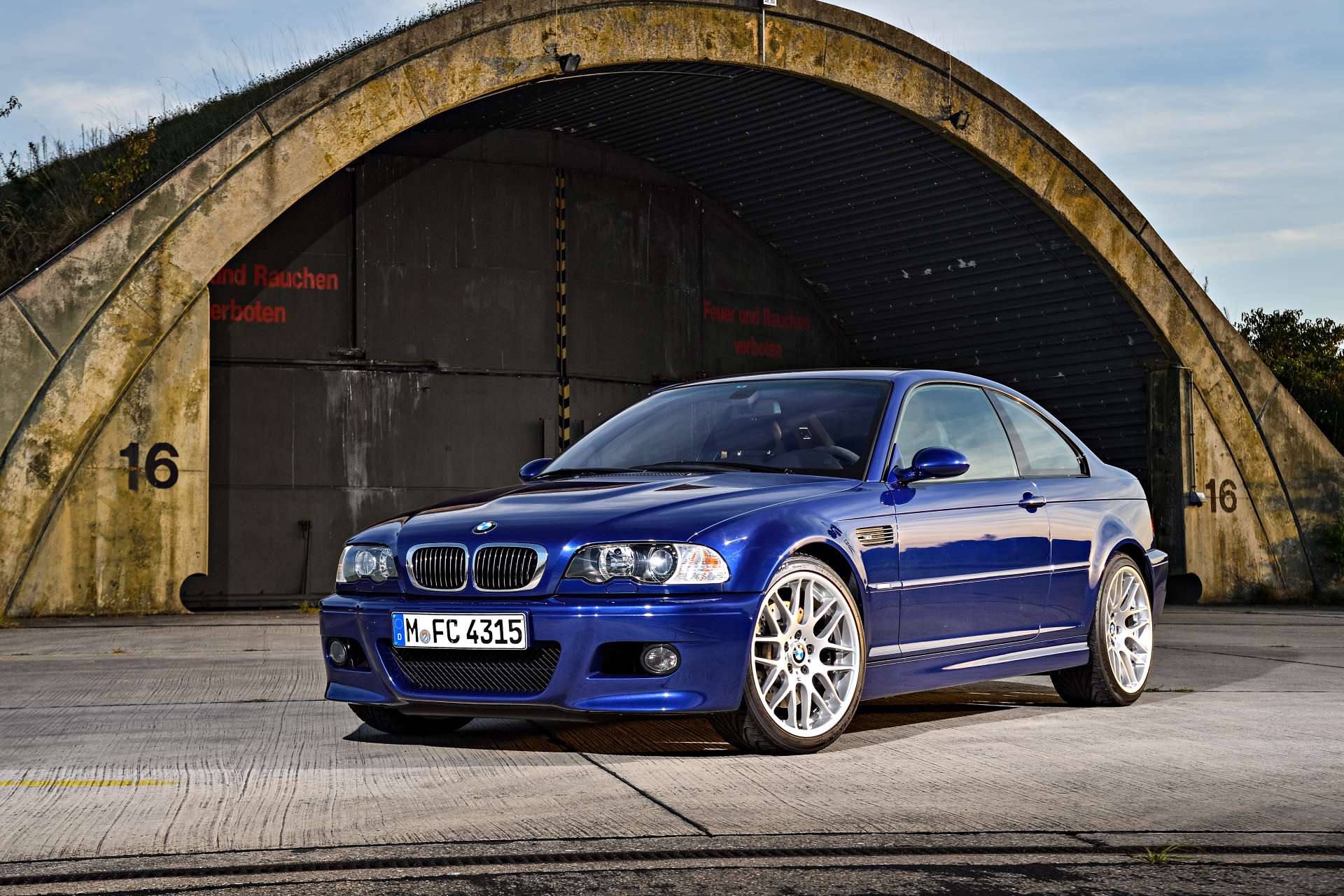
Interlagos is a deep blue that toes the line of being borderline purple in the sunlight. It’s as rich of color as any on the standard options list and looks perfect draped over the M3. The metallic flake doesn’t pop as well in overcast light, giving Interlagos a more muted tone, though still a very blue one. The limited E46 paint lasted well beyond the E46, appearing on the E90-generation of M3 and 3-series and the E85/E86 Z4. However, none of those models could pull off the color like the E46. The older M car’s design is significantly busier than those other models, giving the color more variance in different lights. Where the smooth, broadside of an E92 would bring out a single shade, the E46’s complex curves show the darkest and lightest tones all at once as light doesn’t hit all the same way.
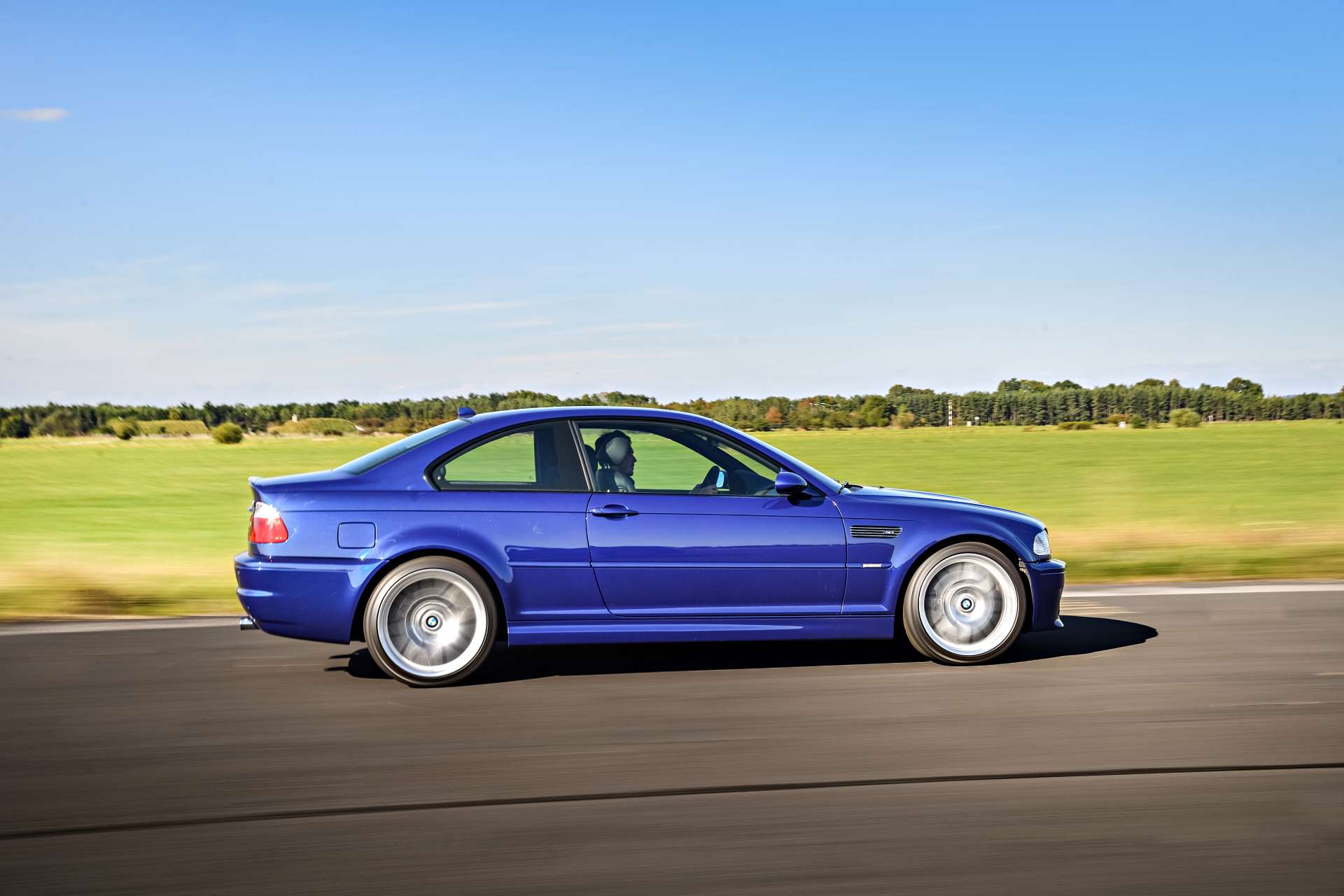
The color arguably gets even better when paired with the interior upholstery. The Black Nappa leather interior was the default choice for Interlagos Blue—a general crowd-pleaser but a bit on the dull side for such an exciting car. Paired with Cinnamon or Imola Red Nappa leather, Interlagos Blue becomes one of those colors you’d have on a bedroom wall poster. Contrast is your friend when it comes to paint and upholstery combinations, and it’s tough to get much better on the E46.
Alpine White III
Alpine White was on its third iteration when the E46 M3 came around. To the uninitiated, it’s just some white paint, but to BMW enthusiasts, it’s the paint that nearly every Motorsport car has worn since the early eighties. On the street, you’d have seen it on a majority of the E30 M3s in the states, on the E36 M3 Lightweights, and many of the E9X M3s. A simple color, but one that looks the business on every BMW, no matter the model.
White is one of those colors that can make or break a model. It’s as clean a color as it gets, bringing out odd lines, interesting styling choices, and puzzling designs right to the forefront. The E46 M3 has few of those, with most shapes and bulges being functional, so the Alpine White III paint lays nicely over the aggressive bodywork. If there were anyone word to describe the color, it’s “pure.” There aren’t any undertones or metallic flakes and no pearlescence, just plain white paint.
Alpine White is almost universally loved in any of the three iterations regardless of the public’s strong opinions towards the more extravagant colors. It lends some motorsport credibility to any model that dons it, especially the E46 M3. The factory E46 race cars nearly all wore a livery that consisted of significant amounts of Alpine White. Those cars never got a chance to benefit from one of the M3’s interiors, though. As Alpine White III works with any color, just about every interior upholstery color can be found paired with it. Imola Red was the bold choice but looks just right; black is the classy, understated look, and Cinnamon serves as an excellent middle ground between the latter two colors.
Steel Grey Metallic
Maybe it’s just me, but silver is one of the least interesting colors you can have on a car. Unfortunately for European car enthusiasts, silver was the color to put on your vehicle. Don’t believe me? Lookup any Mercedes, Porsche, or Audi sports car from that era, and see how many are painted in a shade of silver or grey compared to all other colors. BMW’s E46 M3 was no exception, and the three shades of silver/grey they were painted accounted for the majority of the examples produced.
Titanium Silver, Silver Grey, and Steel Grey were all available for a time, but the latter makes the biggest splash on the E46’s exterior. The dark, menacing grey looks all business with a range of hues that need to be seen in person to appreciate. In indirect sunlight and under fluorescent bulbs, the Steel Grey is true to its name with a subtle blue note emanating from the metallic. Overcast weather gives the shade a heavier grey tone, like something you’d see in a rain-filed cloud, while direct sunlight brings out the silvery shine from the metallic flake. Like the Interlagos Blue, Steel Grey is never one color but multiple depending on where and how the light is hitting the car at any moment.
Steel Grey was available alongside Titanium Silver until the 2004 model year, when Silver Grey replaced it. Another neutral color like Alpine White; the interior/exterior combinations look very good no matter the upholstery. Unfortunately, BMW hasn’t offered Steel Grey hasn’t since appearing on the E46. Other colors like Space Grey have come close to the hue but provide a different take. If you want Steel Grey, it has to be an E46.
Carbon Black Metallic
Black is the most demanding color to keep clean, hands down. Every piece of pollen, pocket lint, mud, and dust appears immediately when it hits the paint. However, the upside to black is that for the 30 seconds, it is truly clean post-wash; it looks stunning. Carbon Black metallic is no exception, though there is some small debate over the true color. Is it black or is it blue? I say yes.
Carbon Black metallic is as close to a “midnight blue” as a black could be. Oddly enough, it’s far bluer than BMW’s Black Sapphire metallic, one of two color options for the E46 M3 CSL. Under overcast skies and indirect light, Carbon Black comes off as a vaguely sparkly black with faint hints of some blue in the metallic flake. Get it under sunlight or any other direct light, and the tone completely changes as the black base coat gets pushed to the background by the surprisingly blue metallics. It’s a depth of color that needs to be experienced in person for the full effect. The car above and below is owned by FCP Euro's Social Media Manager, JR Huntington. In his own words, "A properly cared for Carbon Black has tons of depth but takes on that mirror-like finish of a true black."
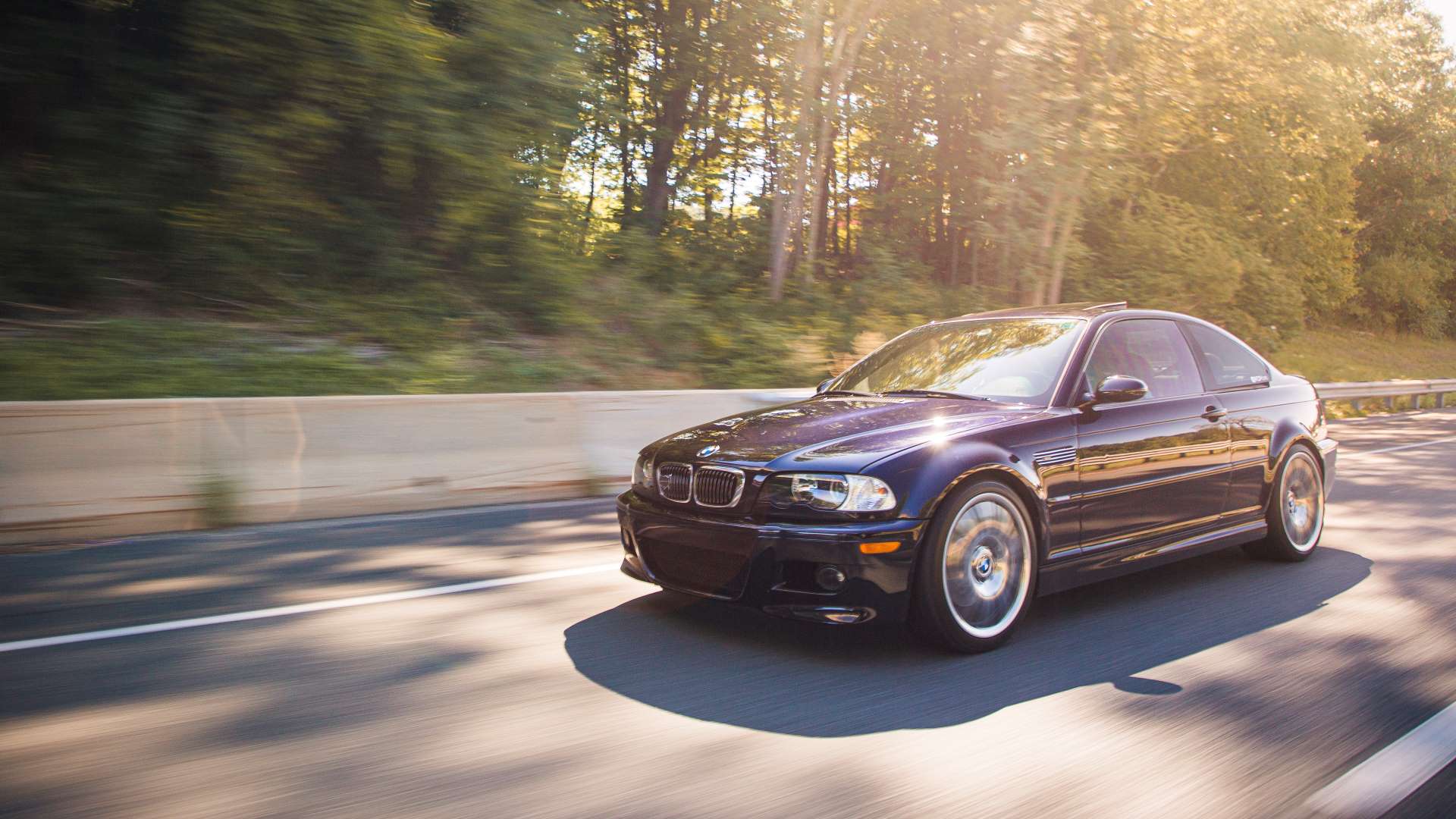
Carbon Black is one of the more popular colors out there, and certainly more so than Jet Black, so plenty of examples are available for sale. Upholstery pairings are commonly either Cinnamon or Black, with Dove Grey and Imola Red leather in less common instances. Any of those interior colors make for a great pairing, as Carbon Black is one of the few exterior colors that looks great with any of the standard interior colors.
Individual Colors
BMW, like most manufacturers, gives you a list of paint options even though you don’t have to stick to it. Wave enough money around, and you can be a part of BMW Individual, a process where you can choose any color or interior, among other benefits. A few hundred E46 M3s were ordered through the Individual program, sporting colors from previous BMWs to colors explicitly blended for the Individual program. Not all colors were winners, but a few could’ve become generation-defining had they been available to more buyers.
Velvet Blue
Daytona Violet and Techno Violet are the biggest names for BMW’s purple paint codes. They’ve covered more than a handful of BMW models over the years and have become a favorite among automotive enthusiasts. I’m not here to call them overhyped as they are lovely colors, but they unjustly overshadow the Velvet Blue offered as an Individual paint option on the E46.
Daytona and Techno are relatively dark colors that emanate a silvery and subdued purple that fall closer to a true purple, if not on the more red side. Velvet Blue removes any of the subtle and dark characteristics of the violets for a deep purple color that would look right at home on a grape-flavored candy. It isn’t exactly a vibrant, in-your-face color, not in indirect light anyway, but it has some life to it that Daytona and Techno simply cannot match. It’s easy to understand why the violets get more exposure, though. Only 115 E46 M3s left Munich in the Individual-only Velvet Blue, while BMW offered Techno and Daytona on the standard color pallet for the E36 M3.
Owning any BMW is special, but one ordered with Individual paint ensures you’re part of an exclusive club; sorry, no benefits, though. If you’re a fan of the color and have a chance to buy one, you’d be crazy not to. Supposedly, BMW only produced 46 left-hand-drive examples in Velvet Blue, with an unknown percentage entering the states. There’s also the chance it features an Individual interior. Few images of those examples exist online, but there was at least one UK-delivered car that was paired with a purple interior. Whatever the interior pairing, Velvet Blue is easily one of the coolest looking colors ever sprayed onto an E46 M3.
Ruby Red Metallic
The E46 M3 had Imola Red as its only non-Individual red. A good color on its own, it lacks a bit of oomph lined up against Phoenix Yellow and Laguna Seca Blue. The E46 has proven to look best in color-shifting paints, and Imola’s non-metallic composition is a bit too “fire truck.” Luckily, BMW offered a few different reds through Individual, and Ruby Red Metallic is arguably their best.
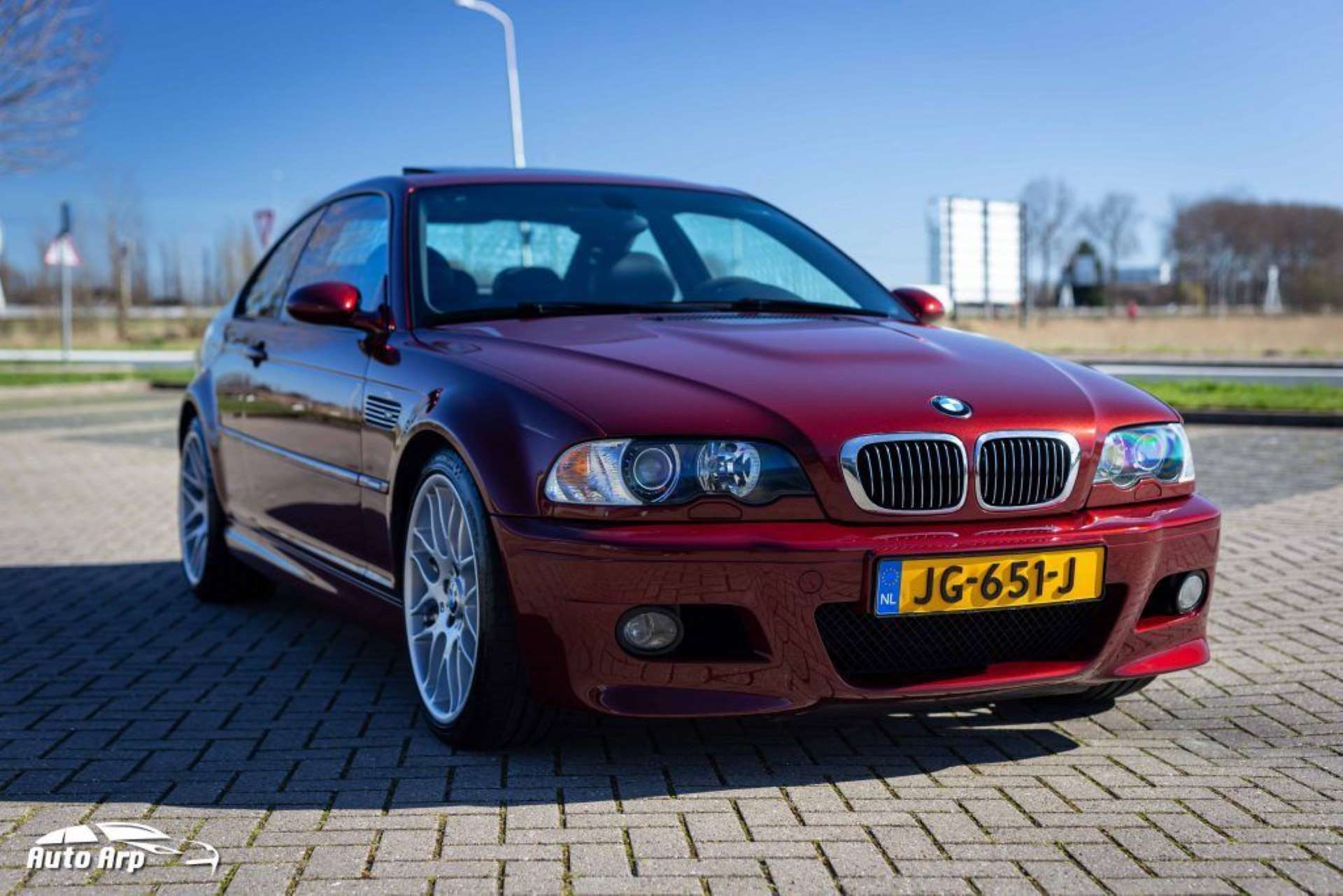
Ruby Red Metallic leaves little to the imagination from the name. The base red is darker, like something you might find on a tired velvet rope or a lighter red wine. The color can appear even darker in overcast lighting, akin to a cinnamon or brick red color. However, once there’s direct sunlight, it changes into a sparkling ruby with hints of its darker base. Mora Red and Chiaretto Red were also available through Individual, with the latter coming very close to Ruby. Mora was the wilder option, coming in closer to a metallic pink/purple.
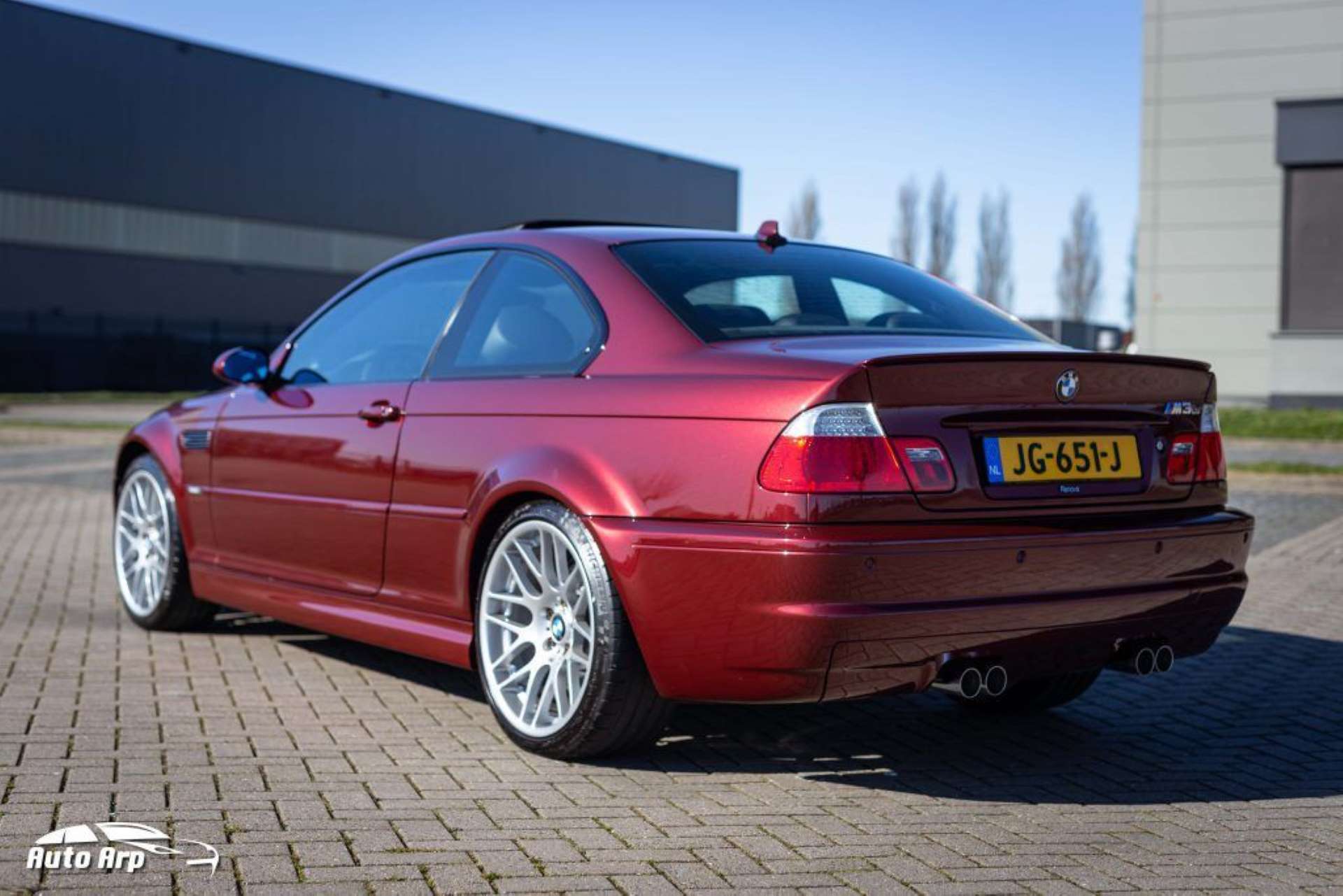
It’s always uncommon to see an Individual BMW, yet seeing a Ruby Red Metallic E46 M3 is downright rare. Allegedly, only around 25 buyers were willing to spec their new E46 with Ruby Red through BMW Individual, and the left-hand-drive examples were in the single digits. Not a great sign towards the color’s popularity or eligibility for this list but tastes and opinions were different 20 years ago. You don’t see anyone rocking velvet tracksuits and extra-long jeans these days, do you?
Stratus Grey Metallic
Many colors on this list look great, specifically on the E46, and some that didn’t make the cut would make it for other models. The nature of car design and paint choices go hand in hand, making color selection an integral part of automotive design and product planning. Yet, every now and then, manufacturers have bonafide hits on their hands—a paint shade that could be sprayed onto a rusty dumpster and allow it to win an award. Stratus Grey might just be one of those colors as it even improves the E63’s appearance.
Stratus Grey, like most of the metallics on this list, really shines in the sunlight, no pun intended. The base grey is a bit lighter than Steel Grey, almost like BMW’s Atlas Grey, and comes off as just another dark, neutral color in overcast, indirect light. Once it’s in direct sunlight, the metallic flake explodes, bringing out an almost pearlescent golden hue. Later in the day, when the sun is low, Stratus Grey takes on an almost brassy bronze shade that could hardly be classified as grey.
Greys and silvers were hot at the turn of the millennium and have come back around in recent years, but Stratus Grey stuck around the Individual list and made it onto a number of BMW’s models. Look around, and you can find it on F80s, E86s, E92s, E38s, and even the Z8 and E65 7-series. It genuinely is a fantastic color that can bring life to even the most polarizing designs, and maybe one you should consider for your next repaint or new BMW.
Dakar Yellow II
Dakar yellow has been a favorite of more than just BMW enthusiasts since it first appeared on the E36. Yellow is an incredibly divisive color that few can ever agree upon, including Phoenix Yellow. The metallic shade chosen for the E46’s standard paint options remains as polarizing as ever today as those who aren’t fans are quick to compare it to specific bodily excretions. On the other hand, Dakar doesn’t get the same hatred as it is objectively a better shade, but a debate took place over whether or not to include it on an E46 M3 list. I and FCP Euro Senior Staff Writer, Evan Madore, don’t particularly care for it on the E46, while several other employees vouched for it. In any case, we all agreed that it is a fantastic color.
There are two different variations of Dakar. The most common is Dakar Yellow II, the ashen shade we are familiar with. BMW switched over to that formula in the mid-nineties after a change in procedure and application. Since then, every Dakar Yellow is technically Dakar II, though no one refers to it like that. In any case, Dakar represents a colorful era in European sports car production where nearly every manufacturer had some form of yellow. For whatever reason, Dakar seems to be the most recognizable and respected of the colors. Volvo’s Cream Yellow, Audi’s Imola Yellow, and Porsche’s Pastel and Speed Yellows couldn’t make the same impact.
No matter the lighting, Dakar comes off as a pale yellow that could easily be associated with an Easter activity. It’s bright but not searingly so, almost as if it were designed for a newborn’s bedroom. Dakar also works well with all kinds of wheel colors; silver, gunmetal, black, and bronze should all bring approval from passersby. Interior combos are more limited than that, as Cinnamon and Imola Red may not be the best pairings, though Black and Dove Grey should work well. Other debates, like which chassis it looks best on, are much broader. Do the E36’s angular lines lend better to Dakar Yellow than the E46’s curvaceous flares and hood bulge?
So, that’s that! There were a ton more colors sprayed onto the E46, whether from the standard paint choices or through BMW Individual, and there’s a good chance you’ll disagree with me and some of my opinions. I’d love to hear why you feel the way you do, though! Let us know in the comments below if I’m missing out on the best color there is or if I absolutely nailed this list. As always, follow along on our blog and subscribe to our YouTube channel for more great DIY and entertainment content.

